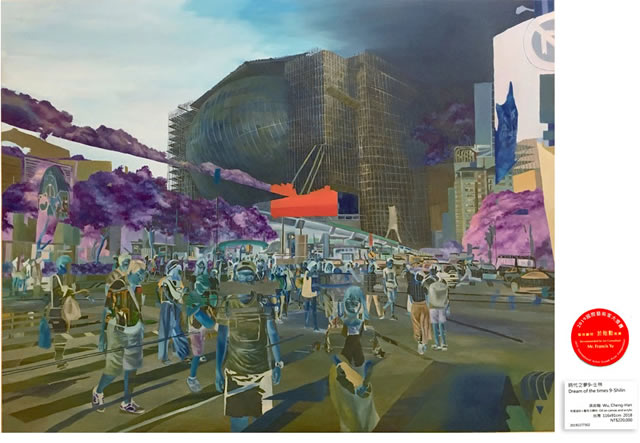Interview with the Artist
(1)Wang, Wei-Quan (2)Michal Elazar Zur (3)Wu, Cheng-Han (4)Gabriele Luciani (5)Phuntsho Wangdi

Because of the creation, the artist Wang Weiquan has cultivated feelings and understanding with driftwood. He smiled and shared: "I often talk to driftwood, and maybe because of this, they often give me unexpected surprises! Sometimes a piece of driftwood is lying by the stream, sometimes buried in the soil, but I can sense it; this is really a fate, a very lucky one."

The pieces of driftwood seem ordinary but actually are fascinating in many ways. They are unique in appearance and round in shape. People also need to hold a harmonious attitude toward life to make life harmonious and complete.
Teacher Wang said that he was always grateful and learning when he was creating driftwood art. Driftwood comes from different places and each has its own characteristics. When they are combined into one work, it is like reflecting the harmony and brotherhood of all people in the world.


Around Israel is the desert. For the people there, water is very scarce. Women often need to walk a few miles to fetch precious water.
A woman holding a water bottle is like holding the source of life, and she is very proud of her in her heart. In the process of fetching water, they accompany each other and chat with each other. The artist wants to convey these particular moments of touching affection through paintings.

This picture is a picture depicting a lonely horse and a woman. The Michal Elazar Zur family is a family of raising horses. She has cultivated deep feelings with her horses. But the generations have changed, and now her daughters no longer inherit the family business, and the horses are gradually getting old. What this painting wants to convey is the feeling of reluctance to bid farewell to the family tradition.
and the mobility of the the future ~

Artist Wu Cheng-Han pays special attention to the relationship among people, nature, and the city~~ People in the countryside are eager for the prosperity of the city, and they miss the quietness of the country in the city, so they often go back and forth between the city and the country.

He hopes that the work will show the passage of time and space, as well as the mobility of the future. Just like Ximending which is a hangout of young people. The city is a place for people to long for.

Teacher Wu’s work has symbolic elements, such as the feeling of photographic negatives. He believes that the negative film represents time, and he uses the negative film to describe the state of unfinished work and express the image of the future.


Italian artist Gabriele Luciani especially likes the traditional culture of Greece, so he often uses Greek mythology as the theme of creation.
"Medea" was inspired by the Greek mythology of Medea - Princess Medea was a woman with powerful magic, with a pair of beautiful golden pupil. After being shot by the arrow of the god of love, she fell in love with the hero who searched for gold fleece, Jason, to help him complete the task and marry him. However, it was later blackened by the husband’s betrayal and became a love tragedy.
Through the presentation of the work, the artist wants to express the variability and unpredictability of women's mood. Just like Medea, who was crazy about love, sacrificed everything because of love; but after being betrayed, she was dominated by the blackened side, and the vengeful revenge was carried out by love and hate.


Phuntsho Wangdi, an artist from Bhutan, studied traditional painting for six years and worked as an assistant under a master in Bhutan for five years. After that, he began to freely create, in addition to the traditional composition techniques, also reflecting the modern colors.

The work "Longevity" wants to express that in modern busy life, most people are eager for a calm and happy life. Therefore, the artist specially painted a god of longevity, and hoped that the viewers could feel the comforting energy.





